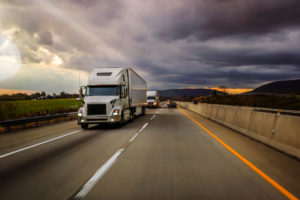By Selika Josiah Talbott, Forbes
It’s time to create AV benchmarking and enable widespread deployment and use of autonomous vehicles.
According to the National Highway Traffic Safety Administration (NHTSA), roadway crash deaths are increasing. Last year almost 43,000 people died in traffic related crashes in the United States, the most since 2005.
This seems astonishing given the increased usage of seatbelts, education on drunk driving and advancement of safety features in vehicles. But the leading causes of crash deaths are distracted driving, speeding or reckless driving and cell phone usage. The real issue in each of these instances is human behavior.
While some believe that autonomous vehicles have been an invention in search of a problem, those of us who deeply understand the technology and its benefits are clear-sighted and aware of a myriad of problems that autonomous vehicles can solve.
They can:
• Reduce the rise in crashes and fatalities
• Complement the diminishing workforce to move goods
• Address safety concerns in industries
• Improve stunted mobility where transportation is neither efficient nor accessible.
The industry has differing views as to the role of autonomous vehicles. Some look at autonomous vehicles as a toy – another status symbol for the very wealthy. Others focus on autonomous vehicles in the movement of freight and as an assist to fleets and yet others concentrate on the ability to address the need to provide efficient and affordable transportation.
No matter the use case, where is the synergy on non-differential hardware and software which would aid the widespread deployment and use of autonomous vehicles?
The autonomous vehicle industry would do well to take some lessons from the aviation industry. Airlines understand that where one fails in its safety technology or innovation everyone suffers. Deregulation rid the industry of administrative and judicial burdens, decreased costs and allowed more people to travel via plane. According to the international Air Transport Association, “Industry standards simplify common processes and reduce cost and complexity. They allow airlines to work seamlessly with each other and with other stakeholders such as travel agents, airports and governments. Standards encourage innovation and provide a better experience for passengers. Standards are developed and adopted under the IATA Conference structure, where all members are able to participate and vote…”
Airlines have long policed their activity by forming coalitions and determining standards of operations and benchmarking what is a necessity in order to ensure public trust and the safety of human life.
But what about autonomous innovation? We don’t have a federal regulatory standard on the autonomous movement of goods or people across the country. We have yet to agree upon a set of standards that ensures that one self-driving car meets the same rigorous analysis as the next. Without that, how is the public or legislators and lawmakers to opine and create a legal framework that will allow us to move into this future of mobility?
We don’t need know the secret sauce of each company’s vehicles. They can keep to themselves the things that make their technology unique in the autonomous vehicle space. But we certainly should be able to agree on standards that we will all live by in order to operate on the roadways, skyways and in all modes of autonomous transportation safely.
A standard would go a long way to reducing and preventing millions in traffic crashes anticipated between now and 2035. Self-driving cars have the potential to provide an 81% reduction in vehicle crashes in the United States.
Each year we delay having an agreed-upon standard means that more people will unnecessarily die on our roadways and that we will have fewer opportunities and options to eliminate traffic vehicle crashes. It’s time to step up as an industry, create benchmarking standards and enable widespread deployment and use of autonomous vehicles.

